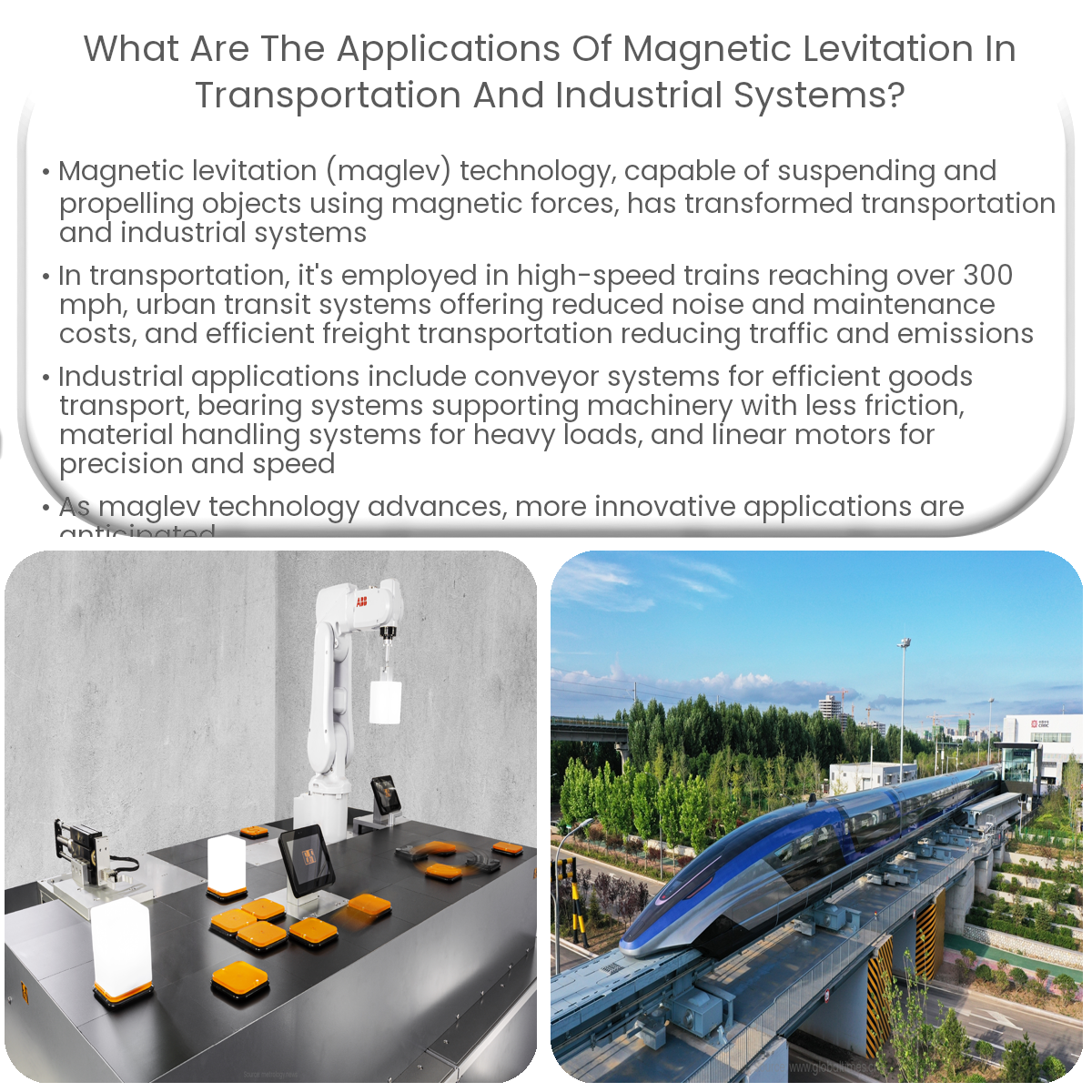Maglev is used in high-speed trains, urban transit, freight transportation, conveyor systems, bearing systems, material handling, and linear motors.
Applications of Magnetic Levitation in Transportation and Industrial Systems
Magnetic levitation (maglev) has become a game-changer in various sectors due to its unique ability to suspend and propel objects using magnetic forces. The absence of friction allows for high speeds and energy efficiency. In this article, we’ll explore some of the key applications of magnetic levitation in transportation and industrial systems.
Transportation
- High-speed trains: One of the most well-known applications of maglev technology is in high-speed trains. These trains float above the tracks, eliminating friction and allowing for speeds of over 300 mph (480 km/h). Notable examples include the Shanghai Maglev Train and the SCMaglev in Japan.
- Urban transit systems: Magnetic levitation is also employed in urban transit systems, such as monorails and personal rapid transit. These systems offer reduced noise pollution, lower maintenance costs, and a smoother ride compared to conventional trains.
- Freight transportation: Maglev technology can be used to transport cargo efficiently and quickly. The use of magnetic levitation in freight transportation reduces the need for trucks and contributes to reduced traffic congestion and emissions.
Industrial Systems
- Conveyor systems: Maglev-based conveyor systems can transport goods within factories and warehouses with minimal friction and wear. This allows for increased efficiency, reduced maintenance costs, and improved reliability.
- Bearing systems: Magnetic bearings use magnetic levitation to support rotating machinery without physical contact, reducing friction and wear. These bearings are used in applications such as electric motors, turbines, and pumps where reduced maintenance and increased lifespan are crucial.
- Material handling: Maglev technology can be employed in material handling systems, such as cranes and lifts, to facilitate the movement of heavy loads with minimal friction and noise.
- Linear motors: Magnetic levitation can be used in linear motors for precise positioning and high-speed operation. These motors are employed in applications like semiconductor manufacturing, where accuracy and speed are paramount.
In conclusion, magnetic levitation has a wide range of applications in transportation and industrial systems, offering numerous benefits such as high speeds, energy efficiency, reduced maintenance, and improved reliability. As maglev technology continues to advance, we can expect to see even more innovative applications in the future.


